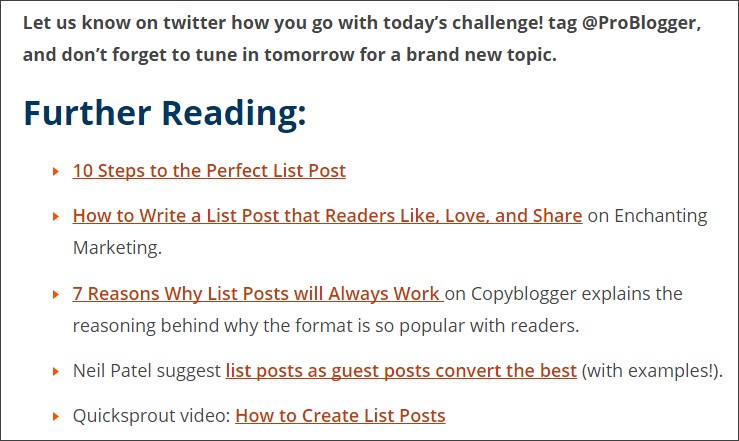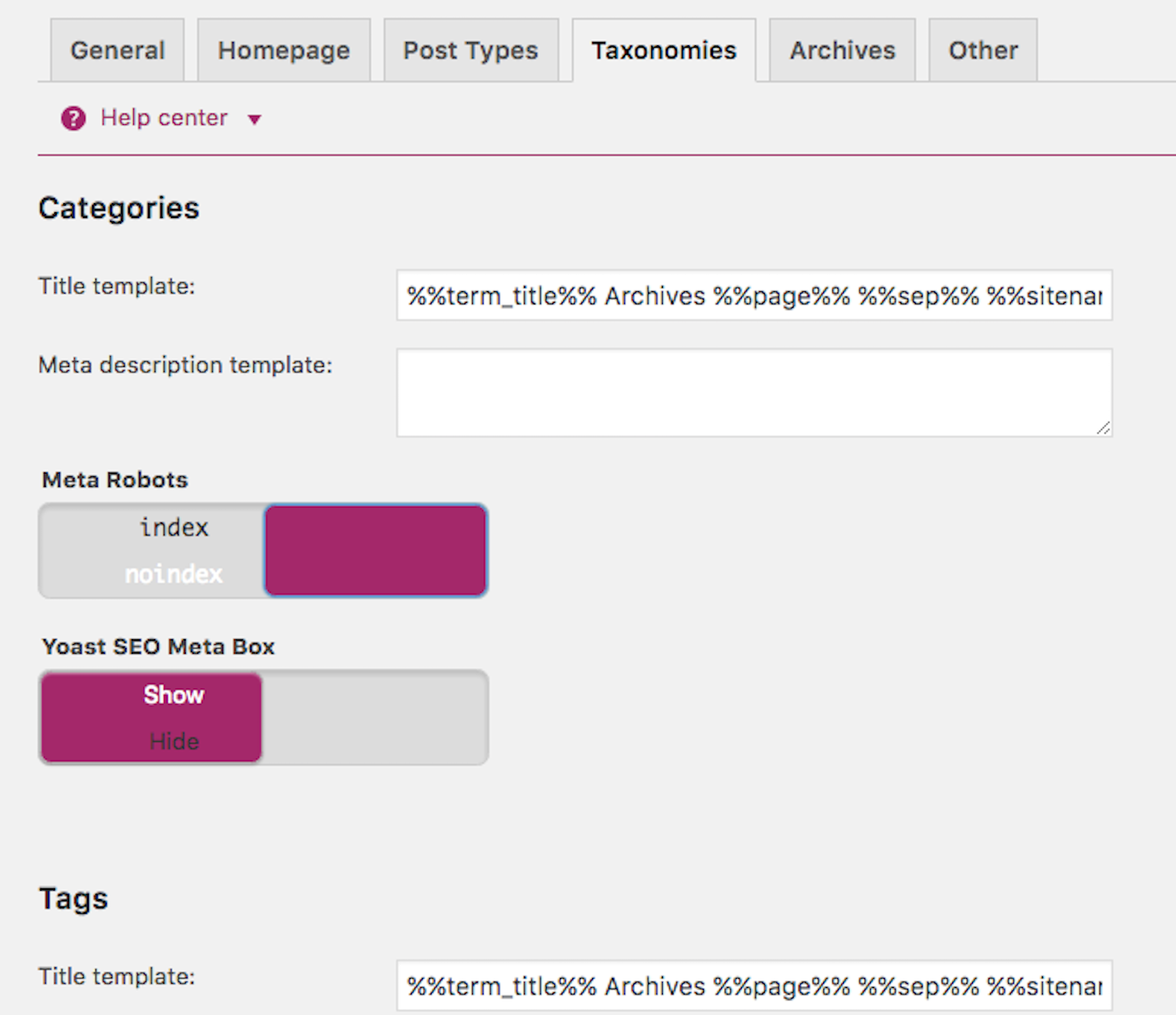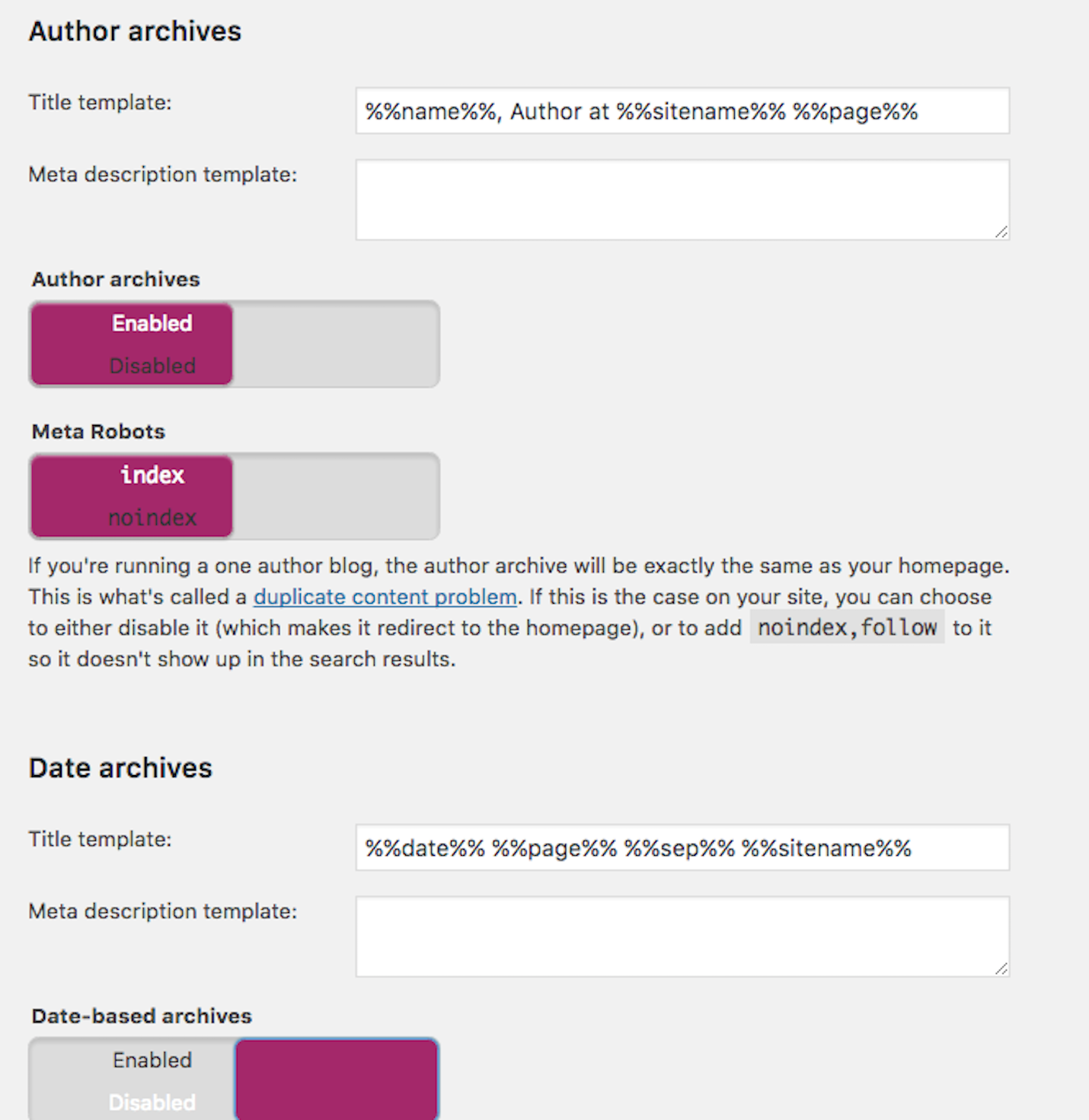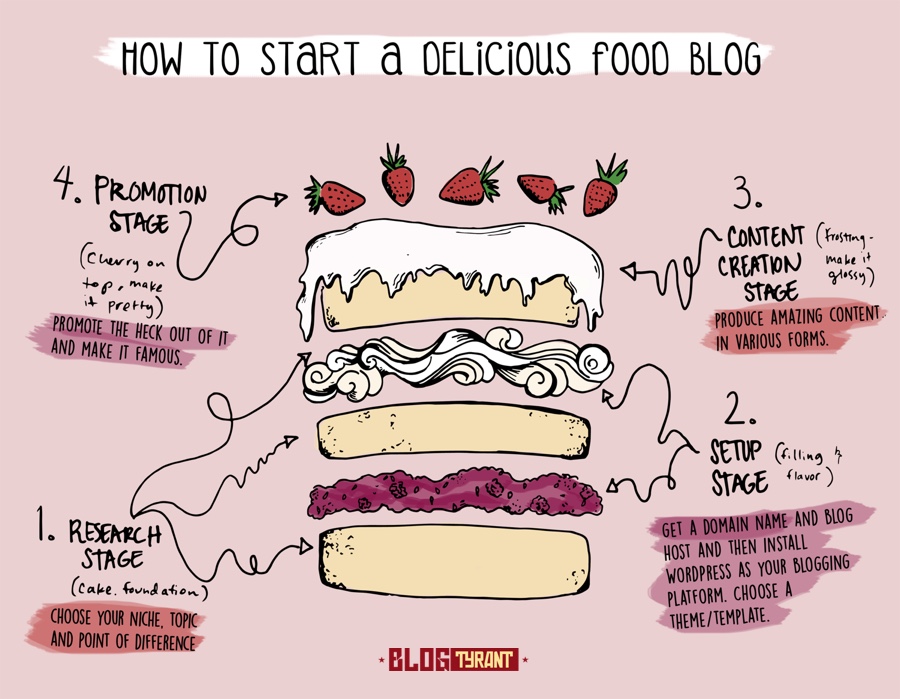This week, I received a great email, a lovely email from Emma, one of our listeners of the podcast who asked me this question.
She wrote, "Hi Darren, I love your podcast! I found your seven day intensive blogging series very helpful, and it led me to write a post I might never have gotten around to otherwise. In answering my most frequently asked question, which is ‘What is Art Therapy?' this has turned into an incredibly long post which covers things which are not easily found elsewhere online.
I have a question for you: is it better to leave it as a single, very long, authoritative and useful evergreen post, or should I split it up into several shorter posts? Which of these would be better for getting my website seen by more people, ranking higher in Google?"
Great question Emma, and thanks for listening. I really do love that you enjoyed the Blogging Groove Challenge. I had a lot of very positive feedback and still can see in the Facebook group a lot of people still working through those seven challenges. This is a great question and I do have some thoughts on the topic and it's one that I think bloggers should really ponder because there's many times where it probably does make sense to write a long post and there's some times where a series makes more sense too.
I want to give you some thoughts on how to make that decision. Before I get into that, for the next few weeks we're going to go back to a weekly show. We usually publish two podcasts episodes for week but while our ProBlogger event is on and it is going to be on in a week and a half from this episode goes live.
I just want to scale things back a little bit for a couple of reasons. Firstly for those of you who are coming along to the event or who are buying the virtual ticket, I don't want you to be too overwhelmed with the sound of my voice. But also for my own sanity and my team's sanity, just want to scale things back a little bit while we do focus on getting that event up and running. The episodes will come out on a weekly basis for the next couple of weeks.
Hopefully this will also give those of you who are still working through the Blogging Groove Challenge an opportunity to catch up a little bit and take a breath. We did do seven episodes in seven days starting back in Episode 137. This gives you a chance to really catch up on that.
The last thing I'll say speaking of the ProBlogger event, if you'd love to come along to the live event here in Australia on the Gold Coast, there still are a few tickets left for live attendees but you need to be quick and head over to probloggerevents.com. There's an opportunity there to buy a live ticket. Those of you who want to join us at the virtual ticket, head over to problogger.net/virtualticket. You can get access to all 50 recordings and slides at the training sessions at the event, and you also get access to a Facebook group that we've got going for virtual ticket holders and live ticket holders and you also get access to all the recordings from last year's event as well.
Now, I want to tackle Emma's question about long form content versus a series of shorter posts. The question of writing long posts versus breaking up posts into short posts and publishing them as a series is one that I do get fairly regularly. I know it's something that a lot of bloggers invest a lot of time into writing a long post like Emma has. Often look at it and think this could be a whole month's worth of content, this could be a lot of content that I could really break down. The temptation is many times to break it into a series.
Sometimes, it actually is better for your readers if you do that and sometimes it's better if it's a long form piece of content. There's no right or wrong answer on this one but there are certain situations where I think either one is probably the preferable thing to do. I want to give you some pros and cons of long posts and pros and cons of series of posts. Hopefully as I work through these, the answer will become clearer for you and for others who are asking this particular question.
On one hand, we've got the option of writing a long post. The good things about long post, the beauty of this is really that your readers get all of their information on a topic in one uninterrupted post that they don't need to keep coming back to over time and they don't need to be clicking from one page to another to get all the information.
I guess you really do need to keep in mind your readers on two fronts here. Firstly, you've got those who are reading your latests posts. Those of you who are coming to your blog, they don't want to have to wait sometimes for the next three weeks to get all the information if you’re going to split it up. Also, those who are coming to your blog in a couple of months time and are finding your old content. Sometimes, it gets a little bit annoying clicking from link to link to link as well. The beauty of having that one post, that one long post, is that it can increase reader satisfaction and really make it easier for them to get all of your great information in one place. That's purely from the reader's perspective.
The other good thing about long posts is that as you've mentioned in your question, Emma, there's a sense that they can be quite comprehensive and authoritative. This gives you, the writer, some satisfaction that you've written something really helpful and it's really impressive for a reader to come to a post that may be 2,000, 3,000, or 5,000 words long. There's something very meaty about that. This can build credibility, can build authority, and it can also help to get your post shared a lot.
What I found with a lot of our long posts, they do get shared a lot. I suspect that's because people feel good about sharing something that's very meaty and comprehensive. People notice the effort that you've gone to that is above and beyond to give them lots of good information. That's another advantage of having a long post.
I've also noticed some of our longer posts tend to rank really well in Google. You've asked about Google in your question. The reason that they're raking well in Google may be that they get shared a lot more and they get linked to a lot more than some of our shorter posts. People are impressed by them but I have heard some SEO experts argue that longer posts can rank better than shorter ones as well.
Certainly, there seems to be in my mind, in my experience, once you get past 500 or 600 words, Google does tend to take notice of the post as well. That's not to say it has to be super long to get to that stage.
There could be an argument there that longer posts will rank better as well but I have also seen some of our really short posts rank pretty well as well. I don't want to just say long is the only way to go if you want to rank.
A couple of good reason there to write a long form piece of content. One, it gives your readers a sense of satisfaction. It will impress your readers as long as the content is good and can help build some authority and credibility. It can increase your shares and it can also help you as a result of those shares and links as well as the length to rank a little bit better in Google.
On the negative side of long posts, there are definition some things that you'll want to consider. Firstly, this probably doesn't really apply to Emma because she's already written the post, but a long form piece of content can take a lot of effort to research and write, take a lot of time.
I find some of my longer pieces have taken me several days and a lot of real effort and a lot of real intense effort to get them done and a lot of discipline as well. I remember writing one post that was over 7,000 words long and I knew from the start that it was going to take a long time to write it. I found motivating myself to write that piece of content a real effort, I’m not the most disciplined person in the world.
That's not to say that just because there's a lot of work involved it's a bad thing. Good things do take work. If you are someone who struggles with motivation and struggles with getting things done, they maybe there's an argument for a shorter post. As I've said, in Emma's case she's already written it, so well done.
Another challenge with long posts is that unless you’re an amazingly gifted and engaging writer, some of your readers probably won't get through to the end of your post. A long form piece of content may not have as much impact for that reason on your readers. The reality is some people scan content online, some people don't have much time, some people are on a mobile device where they may not feel like they really want to keep swiping and swiping and swiping. Some people get distracted halfway along an article. In terms of having an impact upon your readers, there might be an argument there for breaking things down into bite sized pieces so that readers can consume it in separate instances rather than expecting them to sit and wade through a long piece. That might be a factor.
Some types of content will perhaps be a little more boring, a little more dry. You might want to break them down in some way. I've seen some studies talk about how people reading content online respond better to short, sharp pieces of content. Having said that, I've also seen some long pieces that have big impact upon people as well because they are written in a good way. There's pros and cons there.
Another problem with a long, comprehensive post is that they can actually drain you as the author of ideas that could sustain your blog for a longer period of time. Let me give you an example, I talked to one blogger recently who published his very first post on his blog. It was a mega post, it was 9,000 words long and it was everything he knew about his topic of his blog, about the whole niche. The post was amazing, 9,000 words of really useful, actionable content.
He published it and then he sat down to start brainstorming ideas for future posts and he felt like he already wrote everything he knew. He had nothing left to write. Every time he would start to write a new post, he would say I already talked about that, I already gave all my tips on that in that first post. Sometimes, a long post can be impressive to your readers but it can drain you of all your ideas as well.
This particular blogger wished he had written 20 to 30 shorter posts over his first month or so that contained exactly the same information as the big one. He realized he could've broken it down and had a whole month's worth of content as well.
There's some pros and cons there of long form content. As I said, there's no right or wrong answer. On the flip side, let's look at the series of posts. Again, there's some pros and cons. Some of the advantages of writing a series of posts gives you more posts to sustain you over time as my blogging friend found out in the example that I just gave, to be able to break that post down that you've written into maybe three or four posts might give you a couple of week's worth of content which gives you a bit of a break from writing or enables you to prepare some other content or do something else on your blog as well. That's an advantage potentially of having a series.
On a search engine optimization perspective, I think there is an advantage of series of posts sometimes as well. The more focused your posts are, that can have some advantages with SEO. Instead of having one long post that might be quite broad and overarching in its topic, it might rank really well for that overarching phrase that you’re using but it may not be able to rank for some of the more focused keywords in your niche. A series of posts might allow you to rank for a lot of keywords over time.
For example if I was on my photography blog to write a mega post on how to take a well exposed photo, that post might contain ten subtopics within it. It might contain information on shutter speed and aperture and ISO, seven or eight other topics. That pots might rank quite well for something like How to Take a Well Exposed Photo but it's not going to ever rank for shutter speed or ISO or aperture. A series of posts that over time I roll out and they all link to each other might give the same information to my readers but I might be able to rank for all of those smaller key phrases.
I guess here it really depends on what you want to rank for. If you want to rank for a really broad term, then a long megapost might be your best bet. If you are more interested in ranking for ten more focused terms, then a series might be better as well. A series of posts, there being more pieces of content, creates more ways into your site. Again, there's some advantages and disadvantages there in terms of an SEO perspective.
Other advantages of a series of posts, lots of interconnected posts can, some people argue, help with search engine optimization. Search engines tend to like links, they tend to like websites that are interlinked, lots of internal inks from one page to another can help Google to rank your site.
One of the things I love about a series is that it can build momentum on your blog. Regular posts that build from one day to the next give your readers a sense of anticipation. They show your readers that you’re putting some thought, you’re taking them on a journey. Sometimes, readers can really respond very well to that. They feel like this blogger is really taking me on a journey, they're really being thoughtful with the content that they've got.
A series of posts can build anticipation in your readers as well and that can actually help you to get more subscribers as well. If someone comes across your first post in a series and it promises that tomorrow you’re going to write a second post, that builds anticipation and that might give them a reason to subscribe. One of the things that I do suggest if you have a series is always at the end of the post mention that there's another one coming and then give people an option to subscribe so they can get notified when that particular post goes live.
Series are great for building momentum, they're also really good if you’re interested in getting more page views in your site. This is particularly relevant if you monetize your blog using an ad network like Adsense. It's a CPM advertising where you get paid every time someone views the ad. This can be good for your stats and for earnings if you do monetize in that way.
A series of posts can also motivate a blogger to write more. I talked before about how long form piece of content can be really draining to write and can take a lot of time and energy. If you struggle to write something of that size and to motivate your self, a series of posts might help you to break it down into more bite sized chunks. The idea for me of writing a massive long post that's 9,000 words is not the most attractive thing, that doesn't turn me on. I know I can sit down right now and write a thousand words on something, or 500 words on something. Breaking it down can help you to be motivated to write.
One last thing I will say about a series of posts is that it can actually almost be used like a free course for your readers. This sense of building anticipation and building momentum with your readers can be really great. I've seen it work very well. For example if you announce you’re going to tackle a big topic over the month of September which is coming up, something that's going to be valuable to your readers, offer to email them every time a post in that series goes live. It could be a really great way of building your email list and giving your readers a sense that they're on an event.
A good example of this is the challenge that we just did in this podcast, Seven Days to Get Your Blogging Groove Back. That was something I didn't have an email list to associate with but by putting that on, it created this event for people to join and for people to get excited about. It's hard to exactly explain why it works but it gives people a sense of belonging to something and they are participating in something. The idea of an event really can bring a blog to life.
I've seen this happen many times with series of posts. 31 Days to Build a Better Blog started as a series of blog posts that we did over a month. It showed me just how powerful it was to create events on your blog that people can join into. Sometimes, a series, particularly if a series is a participatory type things like the Blogging Groove Challenge, 31 Days to Build a Better Blog, it wasn't just about teaching people, it was about getting people to do something. A series that has some sort of action associated with it can be very powerful.
Let's lastly think about the downside of doing series. For me, the main downside of a series of posts is that some of your readers will simply prefer to get it all at once. It can be frustrating to have to wait for the next post in the series or to click from one post to another post to another post. All it takes is for one of those links from one post or the other to be missing or to be broken and then the person can't find the end of the series. That can be a negative experience and very frustrating for ur readers.
I know for a fact that I prefer to get all my information in one go in most cases. I don't want to have to wait for the whole story. This becomes particularly frustrating when you get very bits with your content, when you do a series just for the sake of building more page views. We've all been to those sites which make you click the next button 40 times to get to the end of the piece of content and they break it down into such minute bits that it gets really frustrating.
Another negative of a series is that it can actually side track your whole blog a little bit. If you have a blog which has normal content, every week you might have the same type of post and then suddenly you want to do a month long series that just looks at one aspect of your blog? For people who aren't interested in what you’re doing in the series, that can actually be very frustrating. They don't want that thing that you've gone off on a tangent, they just want what you normally do. A series can actually stop momentum for people who aren't engaging in the series itself.
I found this when I did 31 Days to Build a Better Blog, there was some of my readers who didn't want to participate in that series. But for the whole month, that's all I did. They were like where's the rest of the stuff that you do? That was lots of short posts and they're all activities that people can do, some people wanted longer form tutorials. You've got to think about do you cater for those readers as well, do you write extra content in there, how do you bring everyone along on the journey? You want to really think about how long your series is, is it going to be every post that you do, are you going to give something else for other people as well?
How do you make the choice I guess is the last question. I've talked about the pros and cons of series and long form, there is no right or wrong choice here. Either one can work, I personally have had really success with both options.
In my early days, I think I probably use series of posts more than I do these days. I really enjoyed writing in that way. I found it easier to write a series of short posts than one longer one. I felt that they created momentum, I found particularly when there was interactive components to them like 31 Days to Build a Better Blog and then Blogging Groove Challenge that people really responded well. I would put down some of the growth of my blogs to the fact that I did do those types of challenges and series of content.
I also think there's an advantage if you are tackling a big topic and you want your readers to be able to really digest the topic and do something with it. Sometimes, breaking it down can be good as well. Teaching someone something that's very complicated and you want them to take their time in digesting that, sometimes it might be better to do that in a series of posts as well.
I would really encourage you to think about a series of posts. I think from time to time, maybe a few times a year, a series can be really the feature of your year. Personally, I try and do two or three series of posts every year. They worked really well. I wouldn't want every post I do on my blog to be a part of a series, I think there's real value in sprinkling in some longer form content as well, or as your readers could end up getting a bit annoyed with you. You’re always leaving them hanging and waiting for the next thing. Definitely do a bit of both.
The last thing I would say is that maybe you could do both with this piece of content that you've written, Emma. Maybe you don't have to choose just one or the other. One of the approaches that I've experimented with a number of times is running a series of posts and then combining all the parts of that series into one other piece of content. You might do a series of five posts on this particular topic, run it over a week or two weeks, let your readers really digest that. At the end of that time, say for those of you who want the whole thing that you can print or that you can share with someone else, here's a PDF version of it and actually give them the whole lot as a second piece of content.
You might even make that a part of an opt in. You might say if you want the whole lot for printing or for sharing or for referring to later, just shoot me your email address and I will send you a copy of that.
The other thing you might like to do is sell that long piece of content. This is what I did with 31 Days to Build a Better Blog. 31 blog posts that were combined together into a PDF, I added a little bit more content to it in that first version and then I offered it for sale. I was really skeptical that anyone would want that but it turns out that many thousands of our readers did want that long form piece of content that they can work through time and time again. I think the reason for that was partly that it was long form, partly that I organized that long series of posts into one easily digestible piece of content, and also it was a very interactive series as well. That might be one thing to consider that actually turned out to be my most profitable ebook on ProBlogger. Well worth considering and an option to really do both of what you’re asking as well, Emma.
I hope that's been helpful for you.
If you enjoyed the ProBlogger podcast, I would love it if you would head over to iTunes and give us a rating and a review. I look forward to chatting with you next week. Thanks!










